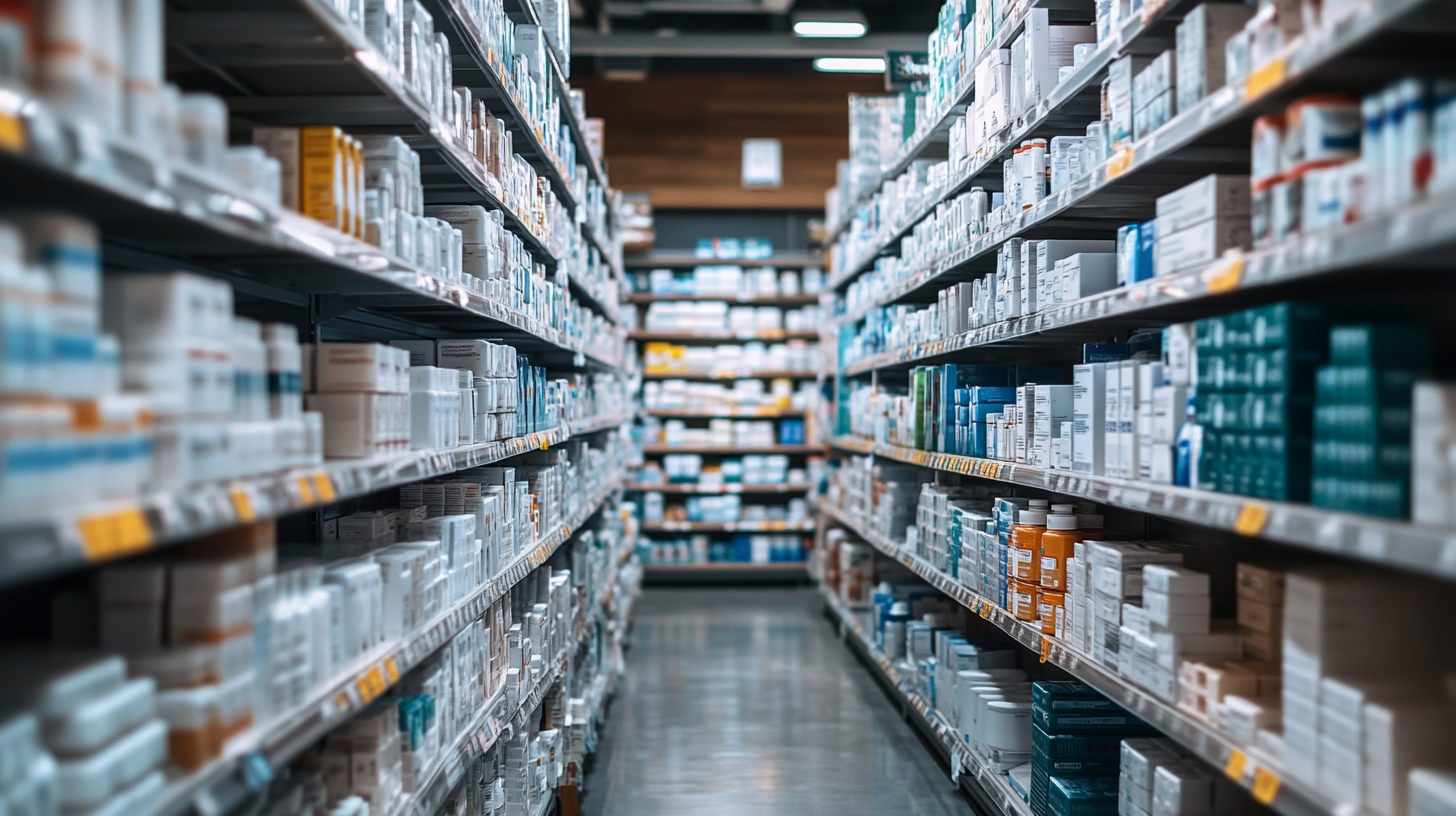Blog
Exploring Diverse Healthcare Product Features and Their Ideal Applications in Global Supply Chain
The healthcare products industry is dramatically changing bringing in innovative solutions to global patient needs. Grand View Research makes it known in its latest report that the global healthcare market will grow significantly to USD 11.9 trillion by 2027, reflecting an estimated compound annual growth rate of 7.9% from 2020 to that date. That compels the need for a wide range of product features, including advanced technologies, easy-to-use, and personalized solutions, so that healthcare deliveries would be quicker and more effective for the manufacturers and suppliers.
As the landscape of global supply chains becomes transformed, it's now more important than ever for stakeholders to understand just which healthcare products will work in, or fail to deliver on, the needed applications. Around 79 percent of healthcare executives emphasize supply chain resilience to navigate uncertainties, according to a Deloitte report. Operations will improve because organizations use data-based insights and innovative product features to minimize their costs while enhancing patient outcomes and satisfaction levels. This blog will therefore dwell on the various features of healthcare products and strategically apply them to the global supply chain view, giving some insight into how professionals in the industry should consider moving their products and supply chain strategies forward.

Diverse Healthcare Product Features: An Overview and Importance
Various features of healthcare products globally contribute significantly to the supply chain as technology advances and consumer behaviors change how things are done. Such as, the current hot news on integrating artificial intelligence into healthcare, which will forever change the way medical procedures are done. For example, a surgeon, using AI-enabled tools, can perform a surgical procedure with the patient present without needing any medical staff nearby, while the patient's outcome can be vastly improved, as real-time data can be accessed in the process. This shows not only the potential of medical tools but also the continuing innovation they require to meet the emerging needs of global healthcare. In other words, there is not only an urgent need to improve the public health scenario, as it would demand indeed a whole variety of healthcare products, but those products also need to take care of being specific to very different applications spread over sectors. When health is hailed by the Chinese government as a milestone in society being a very promising progressive future, the call for dynamically designed medical devices that cater to varying needs-from diagnostics to treatment-will be more insistent than ever. The changed dynamics of medical devices emphasize the necessity of diverse features. Research studies further indicated that these reflections cap an overall trend toward optimized healthcare experiences via smarter, more resource-efficient equipment. In the context of advancing healthcare, developers and manufacturers must, therefore, take such issues into consideration when producing products that are further diverse features but more widely serving the cause of improving patient care and operational efficiency across the global supply chain. The real crossroads for the future of healthcare will be the balance of innovation and pragmatic reality in its application.

Key Applications of Healthcare Products in Global Supply Chains
The international supply chain pertaining to healthcare products is subjected to a huge transformation owing to recent happenings and changes in policy. The COVID-19 pandemic drew attention to the various weaknesses of being too heavily reliant on China for pharmaceutical products and the supply chain. The U.S. government is coming up with ways to reduce this dependence by tightening procurement laws while easing regulatory approvals for domestic manufacturing. This is primarily aimed at stimulating the local economy and also enhancing national security through ensuring a more steady supply of critical medical products.
The adaptability of the industry allows companies like Huaxi Bio to showcase innovative methods at events like the China International Supply Chain Promotion Expo. Their focus on leveraging technological advancements seems to hammer home the idea that a diversified healthcare product base can satisfy different international demands. These exhibitions also provide a platform to encourage collaboration; where international players exchange ideas and propose solutions for the challenges seen during the pandemic.
Statistically speaking, in vitro diagnostic reagents' growth in China makes good supply chain management textbook case studies. With huge policy backing and similar demand from the market, the sector has been on an explosive growth path, with products exceeding 89,000 by the end of 2023. This growth illustrates the need for agility and responsiveness in the healthcare supply chain, as such supply chains are necessary to ensure service delivery in increasing global health issues.

Challenges in Integrating Healthcare Product Features Across Borders
Integrating healthcare product features across borders has many challenges requiring navigation that is careful. For instance, one such complication would be that of varying regulatory standards from a country to another. Thus, a medical device could be needed to comply with certain safety and efficacy requirements depending on that health authority local. Hence, a product that fits under the criteria stringent for the U.S. Food and Drug Administration might not have measures according to the standards set by the European Medicines Agency or other regulatory bodies worldwide. This may cause slow entry into the market, and companies may drain their coffers in creating uniqueness for different markets.
Many other challenges abound concerning culture and logistics, and they are visible in areas where delivery of health differs from one region to another. For example, some product features they prefer can differ widely depending on what is practiced in a given country or expected by consumers from it. Some could even be that drug packs are deemed user-friendly within one country but are considered lacking in another. These are some of the cultural differences that capture an understanding that would need to be in place to achieve success by such global integration. Otherwise, mismatched adoption would therefore reduce it. There is another added complexity under a global supply chain: several stakeholders exist, each having its own set of standards and requirements. This diversity causes further complexity when trying to align developing-and-distributing activities with a consistent product offering.
Finally, the technological differences between countries are often hurdles to smoothly boasting products. In fact, some countries fail to prove a decent amount of infrastructure to install the newest health technologies, thus creating what could be very well termed as a fundamental divide between healthcare providers with respect to capability. Without exception, product designs have to be of a flexible nature adaptable to a variety of settings, keeping in mind the critical characteristics which would be matched with local need and regulation. Thus, integrating healthcare product features across borders brings further improvement in patient outcomes globally.

Innovative Technologies Enhancing Healthcare Product Distribution
The huge improvements in global health supply chains in the modern day can now be attributed to modern technology. As cited by Grand View Research, the healthcare logistics market is expected to have a market value of USD 90.3 billion by 2027, with a trend rate of 7.3%. This growth is predominantly due to developments being made in distribution technology to improve the delivery process of healthcare products. Very much in the transformation are the emerging technologies like IoT, AI, and Blockchain which proffer solutions to major inventory management and product traceability problems.
With IoT devices, the providers can ensure that their healthcare products are monitored in real-time all along the transportation through the supply chain. They are fitted with sensors that check for temperature, humidity, and location so that these sensitive products such as medications and vaccines are maintained in specified conditions during the trip. Such enhanced patient safety is now accompanied by material financial benefits, as reported by Deloitte, which claims companies using IoT solutions in their supply chains can make savings of up to 25% in operational costs.
In turn, blockchain technology seems capable of making great strides in the distribution of healthcare products by regulating transaction details that are open to scrutiny and tamper-proofing. As per a report from PwC, some 61% of health executives surveyed believed the blockchain will have an extremely significant impact on healthcare supply chains. By enhancing data integrity and thus trust among stakeholders, blockchain ensures better regulatory compliance while eliminating counterfeit products from the supply chain. Therefore, by making the distribution processes more efficient, the utilization of these technologies also greatly improves the overall quality and safety of healthcare services.
Case Studies: Successful Implementation of Healthcare Products Globally
Very many world-renowned healthcare products exemplify a work of innovative features for comprehensive health requirements. The Clinical Trials Act in Japan marks the much-enhanced integration of real-world evidence into the lifecycle of such products. Three specific measures constitute the trinity of review by clinical research ethics committees, conflict of interest management, and responsibilities of principal investigators; all underline that rigorous oversight and ethical consideration are fundamental to healthcare product development.
Japan's case studies provide evidence on how such regulations have done wonders in improving healthcare solutions delivery. A recent diabetes management focused initiative, for instance, used real-world studies data to build product features before the patient had to get effective outcomes. The ethics involved ensured the transparency and the credibility that are so vital in any healthcare context.
Such rigorous research methodologies also propagate health care into the global supply chain. Health care products derived from ethical considerations will not only meet the local regulatory framework but will also win credence internationally, which is extremely important for market penetration and diffusion. This is evidenced by the various international partnerships established by Japan's stringent regulation on clinical trials.